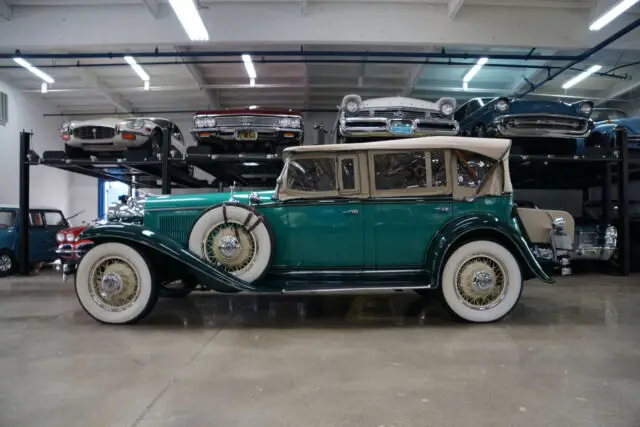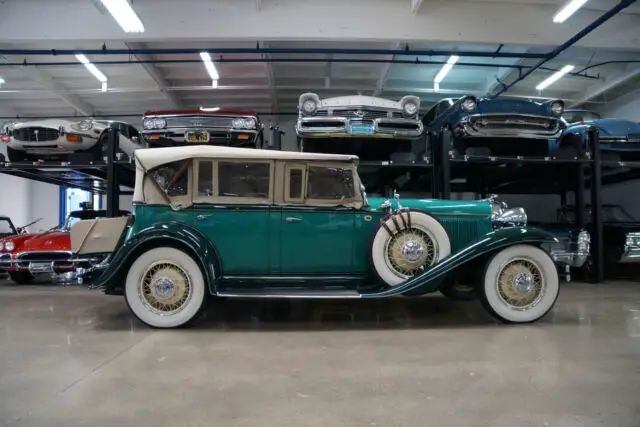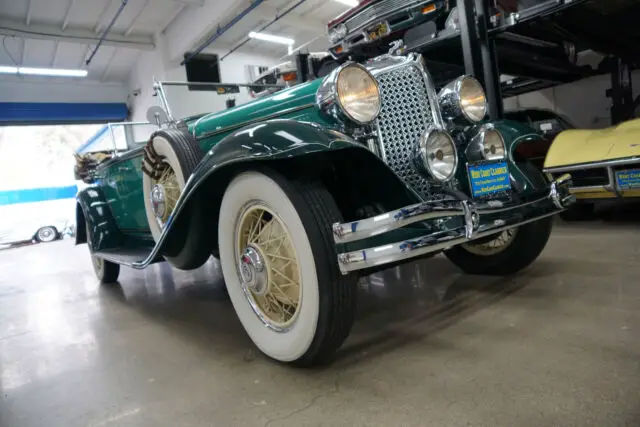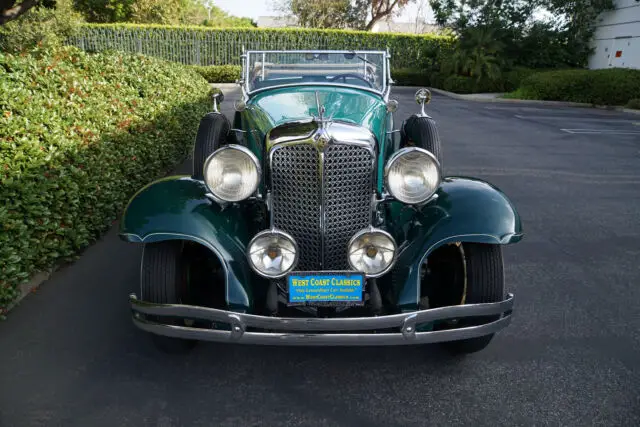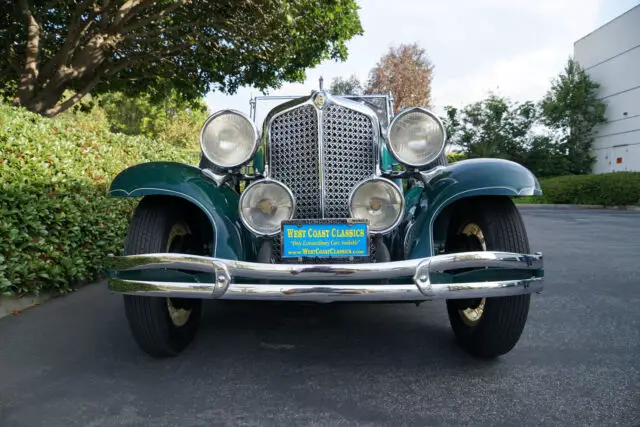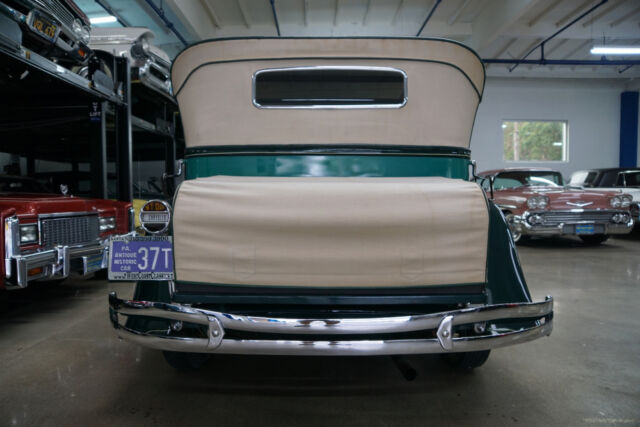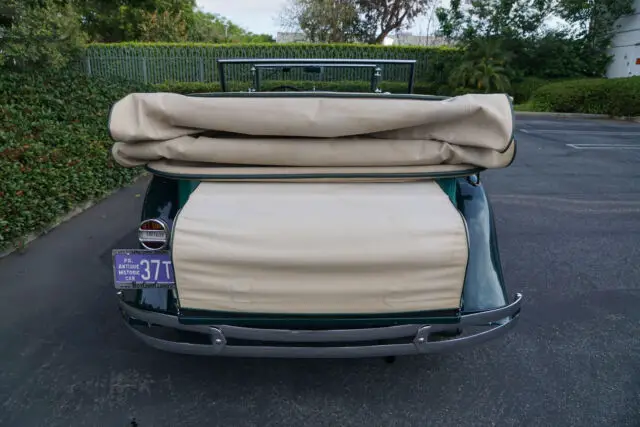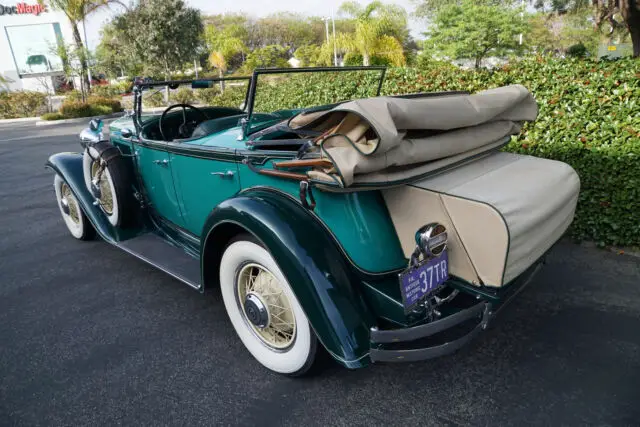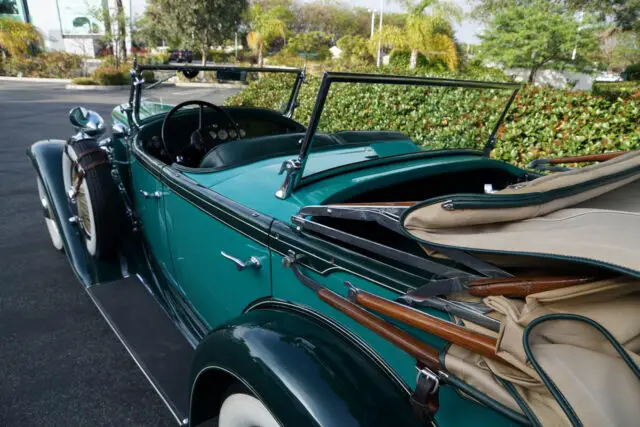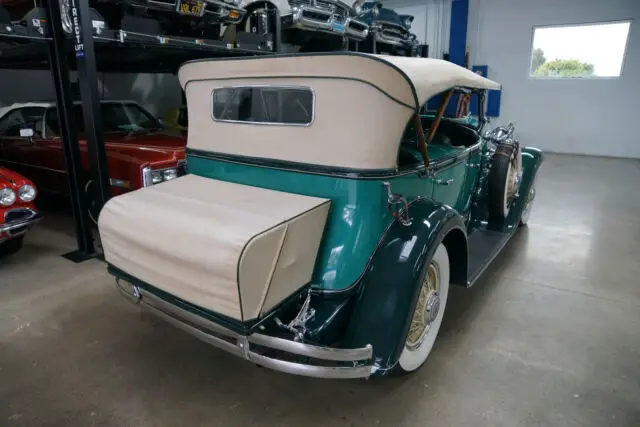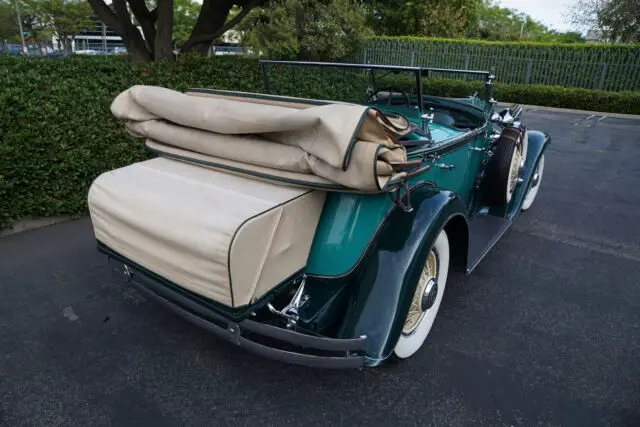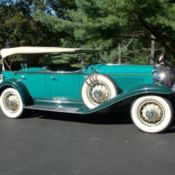|
West Coast Classics are proud to present an absolutely exceptional example of this extraordinarily rare 1931 Chrysler CD 2nd Series 124" Dual Cowl Phaeton with original coachwork by 'Locke & Company' of New York with it's original CD 2nd series 261 88HP 8 cylinder engine, original 4 speed non-synchromesh transmission with hydraulic brakes, and still beautifully presented in a stunning two-tone Green color paint with all body panels obviously removed, stripped and media blasted prior to being restored, beautiful chrome... and light lenses and grille and a gorgeous matching Green leather interior!This particular 1931 Chrysler CD Dual Cowl Phaeton has beautiful and adventurous Dual Cowl styling and is a striking restoration and presentation of the iconic Art Deco bodystyle of the 1930's, it's a former AACA First Place Award winner which has reportedly been driven less than 3,000 miles since it's frame off restoration. It was previously owned by renown Pennsylvania collector Bernard Berman until 1990 when it passed into the hands of the equally renown John E. Morgan Collection Museum. The car is an older restoration that was an AACA National First Prize winner back in 1971 which has been extraordinarily well preserved, with reportedly less than 3,000 miles since the restoration, and which has absolutely no rust with no signs or history of any accidents - one very rare example and one of a reportedly 113 total production build! The car has it's seemingly original or at the very least very period correct tan canvas convertible top and frame with no rips or tears and which is perfectly functional with the original wood bows in superb shape, it's original steering wheel, dual factory spare wheels mounted on the fenders, original gauges with all the options working as they should including all the gauges and lights.Walter P. Chrysler's first automobile bearing his own name was built at Detroit's former Chalmers plant and made its debut in January of 1924. It was a well-engineered and innovative vehicle that was medium priced and its six-cylinder engine offered above average performance. The new Chrysler had a tubular front axle, full pressure lubrication, aluminum pistons, solid front & live rear axles with semi-elliptic leaf-spring suspension, and four wheel hydraulic drum brakes. During its first year of production more than 32,000 examples were sold. Chrysler quickly built reputation for their excellent performance and durability, and this was proven during the late 1920s and early 1930s in top racing events, including the 24 Hours of LeMans, Spa 24 Hours, and the Mille Miglia.In 1926, Walter P. Chrysler decided to compete with North American marques Cadillac, Lincoln, Packard, Pierce Arrow, Cord, and Duesenberg in the luxury car field. Chrysler offered a variety of body styles: a two/four-passenger roadster (four passenger if car had the rumble seat a four-seat coupe, five-passenger sedan and phaeton, and a seven-passenger top-of-the-line limousine. The limo had a glass partition between the front and rear passenger compartments.The 1930s saw Chrysler introducing its Imperial Eight and continued updates to its core six-cylinder models. It was no accident that Chrysler, the flagship of Walter Chrysler's automotive empire, was the last marque in the company to adopt a straight eight engine. It is significant however that it's Eight was the best of the three, larger than those of the 1930 DeSoto or Dodge. In fact there were 4 Chrysler Eights. The smallest a 240 cubic inch was shared with Dodge. There was a new 261 cubic inch power plant, an intermediate 282 cubic inch unit, and the Imperial had a massive 385 cubic inch, 125 brake horsepower unit derived from the earlier Imperial Six. The series CD cars are the most confusing. Initially the 'New Eight' produced in the First Series was with the 240 c.i. engine from July 1930, the CD gained a second series in January 1931 with the 88 HP 261 c.i. engine, as this particular car was born with. Finally the CD Deluxe Eight engine debuted in May 1931 with power from an L-head 282.1 cubic-inch engine offering 100 horsepower and mated to a four-speed 'multi-range' transmission. Bodystyles included a convertible coupes, Royale, roadster, and sedan.This 1931 Chrysler CD Dual Cowl Phaeton with a 'Locke & Co' semi custom Dual Cowl Phaeton body is reportedly one of just 113 examples built and with obviously very few known to remain. Power is from the second series 261 cubic-inch L-head eight-cylinder engine offering 88 horsepower and tied to a four speed manual transmission. It has the renown 'Locke & Company' of New York semi custom coachwork and the front is the striking sculptured grille with an Art Deco design, flanked by large bullet shaped headlamps with Trippe Safety lights below. There are sweeping front fenders accented by dual side-mounted spares. In the back it a luggage pack. It rides on wide whitewall tires mounted on cream colored wire wheels. The exterior is finished in two-tone green paint. It is a previous AACA First Place Award winner and has reportedly been driven less than 3,000 since its full restoration was completed.Between 1925 and 1932, the 'Locke & Company' of Rochester NY's plant specialized in open bodies, and produced a large number of beautiful, series-built cabriolets, phaetons, dual-cowl phaetons, convertible sedans, convertible Victorias, roadsters and sport tourings for Chrysler, Duesenber, Franklin, Graham, Lincoln, Marmon, Packard, Pierce-Arrow, Ruxton and Stutz, most of which were advertised as customs or factory, although they built regular production bodies as well. A few closed bodies were produced, mostly for show cars, (for example a beautiful black 1930 Ruxton five-passenger sedan shown at the 1929 Chicago Salon) but none in any significant numbers.On rumble seat equipped roadsters, Locke offered a nifty little side door that allowed entry and exit without having to crawl over the body. Other roadsters were built with a completely disappearing top which folded into a purpose-built cavity covered by a hinged deck panel. Some Locke convertible Victorias featured a right front seat that slid forward - rather than tipped forward as was the stand practice of the time. Bodies built for long wheelbase chassis could also be equipped with a rumble seat, an option normally found only on roadster bodies. So equipped, the manufacturer could boast a true 7- passenger seating capacity in a two-door convertible.For their dual-cowl phaeton bodies, sometimes marketed as convertible touring sedans, Locke developed an ingenious counterbalanced rear cowl that raised automatically whenever either rear door was opened. However ingenious Lockes open bodies were, they had no effect on the power of the Depression. When the flow of new factory orders evaporated in 1932, Locke's Rochester plant and their Manhattan facility soon ha
|
 Home
Home Contact us
Contact us NEWEST CARS
NEWEST CARS SELL YOUR CAR
SELL YOUR CAR FAQ
FAQ
